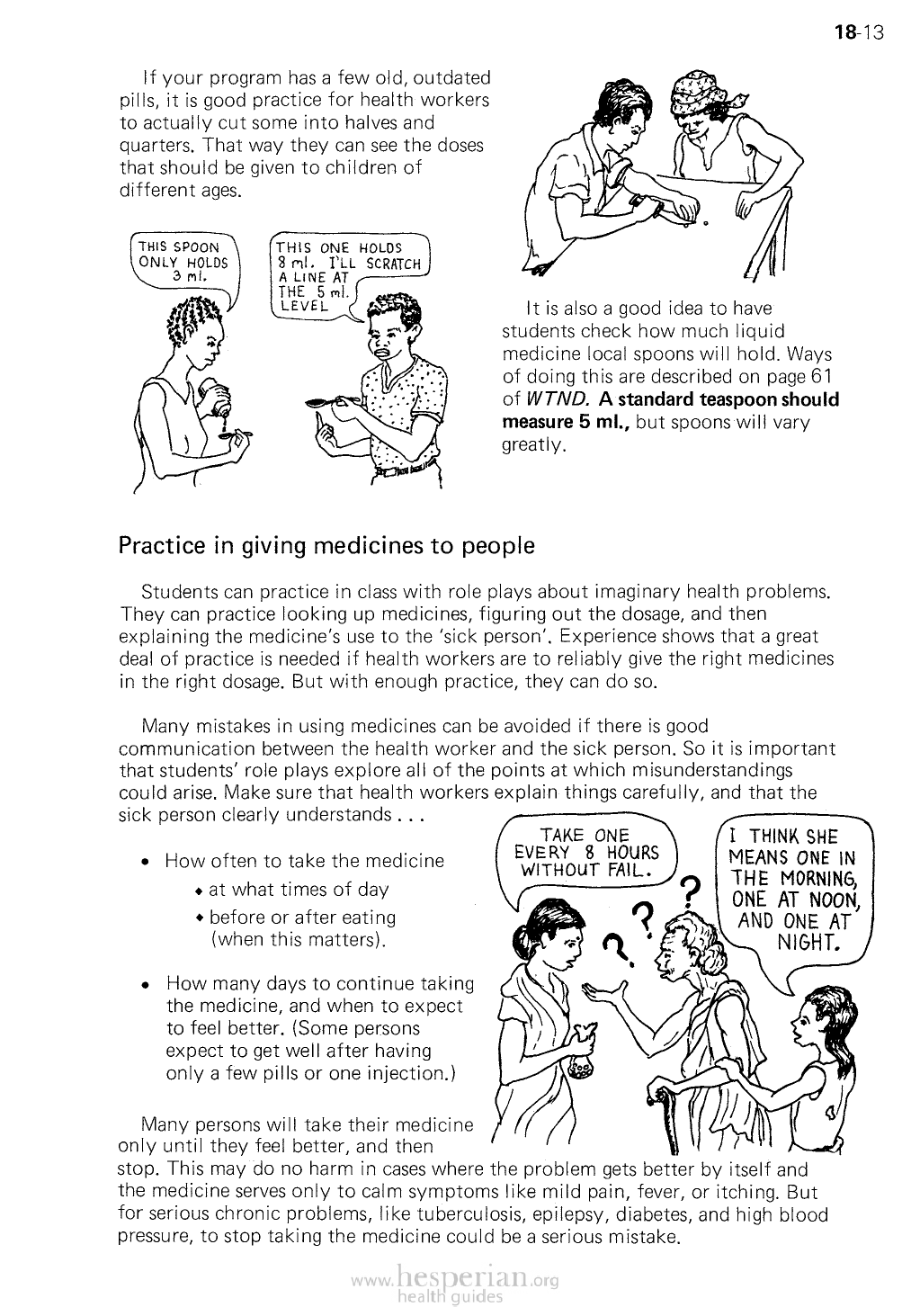
If your program has a few old, outdated
pills, it is good practice for health workers
to actually cut some into halves and
quarters. That way they can see the doses
that should be given to children of
different ages.
18-13
It is also a good idea to have
students check how much liquid
medicine local spoons will hold. Ways
of doing this are described on page
61 of WTND. A standard teaspoon
should measure 5 ml., but spoons
will vary greatly.
Practice in giving medicines to people
Students can practice in class with role plays about imaginary health problems.
They can practice looking up medicines, figuring out the dosage, and then
explaining the medicine’s use to the ‘sick person’. Experience shows that a great
deal of practice is needed if health workers are to reliably give the right medicines in
the right dosage. But with enough practice, they can do so.
Many mistakes in using medicines can be avoided if there is good
communication between the health worker and the sick person. So it is important
that students’ role plays explore all of the points at which misunderstandings could
arise. Make sure that health workers explain things carefully, and that the sick
person clearly understands . . .
• How often to take the medicine
at what times of day
before or after eating
(when this matters).
• How many days to continue taking
the medicine, and when to expect
to feel better. (Some persons
expect to get well after having only
a few pills or one injection.)
Many persons will take their medicine
only until they feel better, and then
stop. This may do no harm in cases where the problem gets better by itself and
the medicine serves only to calm symptoms like mild pain, fever, or itching. But
for serious chronic problems, like tuberculosis, epilepsy, diabetes, and high blood
pressure, to stop taking the medicine could be a serious mistake.